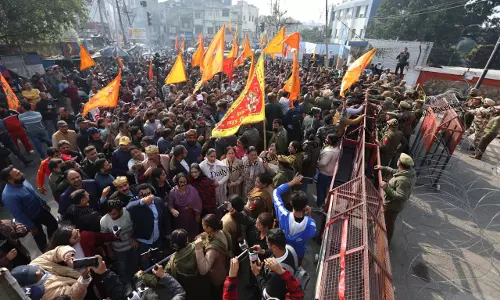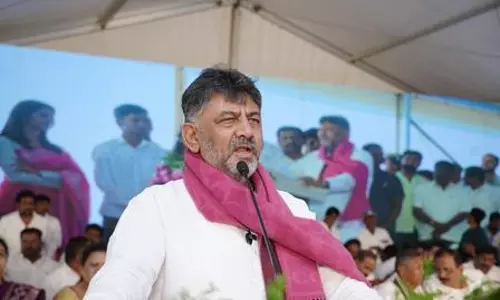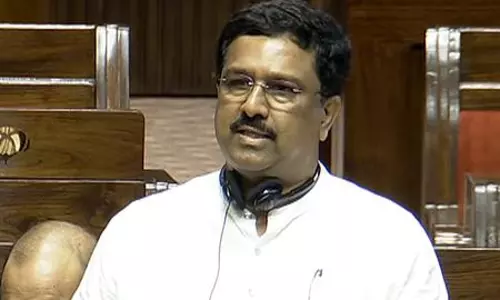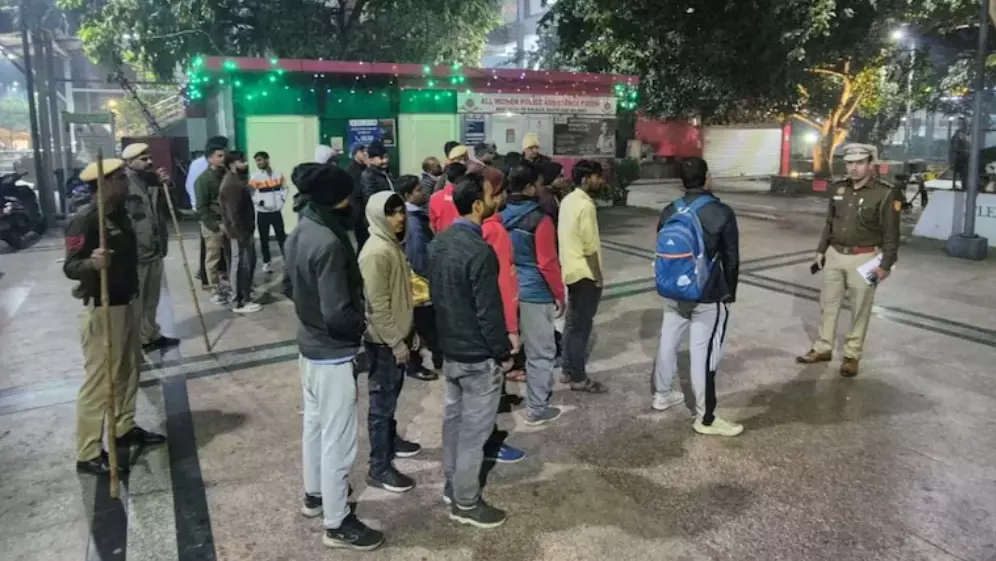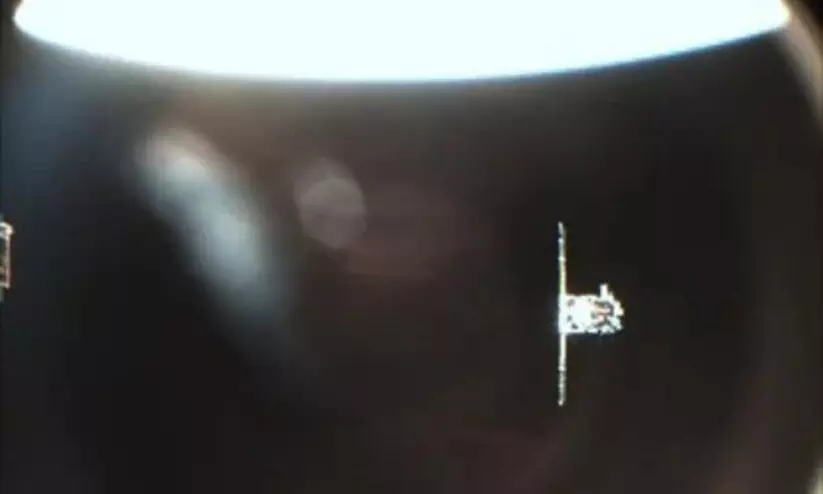
India fourth country to achieve feat as ISRO docks 2 satellites in space
text_fieldsThe SpaDeX satellites when holding position at 15m | Photo: @isro/X
The Indian Space Research Organisation (ISRO) successfully docked the SpaDeX satellites on Thursday, days after bringing them as close as 3 meters together, according to sources.
ISRO announced its success on social media platform X, “Spacecraft docking successfully completed! A historic moment. Let’s walk through the SpaDeX docking process: Manoeuvre from 15m to 3m hold point completed. Docking initiated with precision, leading to successful spacecraft capture. Retraction completed smoothly, followed by rigidisation for stability. Docking successfully completed.”
ISRO had previously missed two docking schedules, on January 7 and 9, due to technical problems. The space agency launched the satellites on December 30.
On January 12, ISRO announced that a trial attempt to get the two satellites within 15 meters and 3 meters of each other had been successful. “A trial attempt to reach up to 15 m and further to 3 m is done. Moving back spacecraft to a safe distance. The docking process will be done after analysing data further,” ISRO had said.
ISRO had previously announced that the docking of the two satellites would be a public event, but after two successive postponements, a senior ISRO official stated that the docking "is on track" but that the space agency will now "dock and inform" the public about the exercise, Indian Express reported.
The SpaDex docking schedules were postponed following the announcement of a change of guard at ISRO. On January 7, the Central Government announced V Narayanan's appointment as ISRO's new director, and he took charge on January 14.
The SpaDex (Space Docking Exercise) mission is designed to be a technology demonstration for docking two small satellites launched by the PSLV on December 30.
The first true Indian mission that requires docking capability is likely Chandrayaan-4, which is intended to bring moon samples to Earth. The mission's re-entry module, built to endure heat during re-entry into Earth's atmosphere, will be launched separately.
The transfer module carrying Moon samples will approach and dock with the re-entry module in the Earth's atmosphere. Docking is also necessary to set up the Bharatiya Antariksh Station. The first module is scheduled to launch in 2028. It is planned to include five components, which will be launched separately and brought together in space.
The human mission to the Moon, which would also require the capacity, is not likely to take place before 2040.
On December 30, ISRO launched two small spacecraft — SDX01, the Chaser, and SDX02, the Target — into a low-Earth circular orbit and separated them by about 20 km to allow for a progressive rendezvous and eventual docking.
Following the initial 20 km inter-satellite separation, the Chaser satellite approaches the Target satellite, reducing the gap to 5 km, 1.5 km, 500 m, 225 m, 15 m, and 3 m before the two spacecraft finally docking.
“After successful docking and rigidisation, electrical power transfer between the two satellites will be demonstrated before undocking and separation of the two satellites to start the operation of their respective payloads for the expected mission life of up to two years,” ISRO had said ahead of the launch of the mission.




